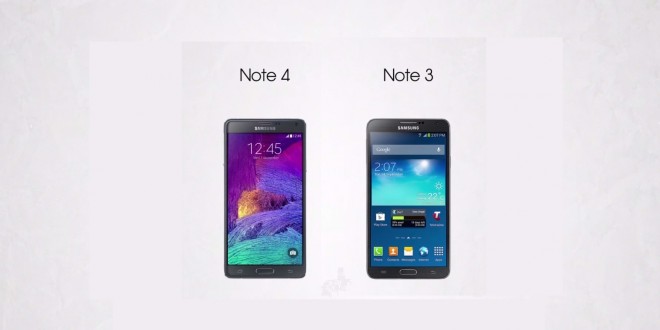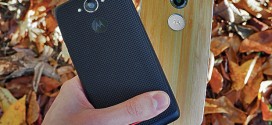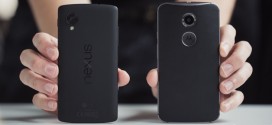The Galaxy Note 3 as well as its successor, the Note 4 have quickly become widely popular just after their launch, proving that there is a considerable number of people actually interested in and attracted to “phablets”. The Galaxy Note 3 and Note 4 don’t seem very different when you first lay eyes on them, but on the inside (and the outside, if you look closely) there’s a whole lot going on. We’re going to try to determine whether the Note 4 actually outdoes the Galaxy Note 3 and whether it offers at least the same bang for buck ratio.
Phablets are becoming pretty popular, and even Apple surprised us with one this Fall, naming it the iPhone 6 Plus. With the launch of Apple’s big-screen smartphone, people went crazy about 5+ inch smartphones and newer product announcements reflect the new trend. Even though a few years ago, when the iPhone was first launched, everybody was gravitating towards smaller and smaller smartphones, now it seems we are at the opposite pole. Weird, how trends in technology go. Ever since we had the first phones, we wanted them to be small and portable. When Apple introduced the touchscreen smartphone to the world, we went crazy about having bigger and bigger screens we could work with.
In a short amount of time, smartphones like the iPhone 5S, Galaxy S4, HTC One M7 and more became staples of our lives and social lives, acting as small mobile computers that could keep us in tough with everything we needed without requiring a bulky laptop. The Galaxy Note 3 is a great example of a phablet, although we do have the massive Sony Xperia Z Ultra is a whole lot bigger, not to mention many flagships this year (yes, the iPhone 6 Plus included) are more than 5.2 inches in display size. That being said, since Samsung makes high-end phones that aren’t as pricey as other ones (yet again, the iPhone 6 Plus comes to mind), the Galaxy Note 3 and Galaxy Note 4 can be safely listed among the most successful phablets of the past two years.
Even though the Galaxy Note 3 was released last year, the handset still remains a crowd favorite, in spite of the not-so-classy design. The Galaxy Note 4, on the other hand, first made an appearance at IFA Berlin 2014 and it became an instant crowd favorite. Maybe the fact that it came alongside the Galaxy Note Edge gave it a push into the limelight. If you don’t know what a Galaxy Note Edge is, it’s basically the same smartphone as the Note 4, save for the hanging display on its edge. Design-wise, the Galaxy Note 4 looks much like its predecessor, save for the fact that Samsung decided to put a metal frame on the device after outrage on the faux chrome band-aid Galaxy S5 took hold.
Let’s get right to it then and find out whether the Note 4 outdoes the Galaxy Note 3 and whether it’s worth the price bump over its predecessor. First off, the Note 3 display is identical in size to the Note 4, measuring 5.7 inches. The difference is in resolution, as you might have guessed already, as the Note 3 has only 1080*1920 resolution with 386 ppi pixel density while the Note 4 has a 1440*2560 with 515 ppi pixel density. Clearly, the difference in display quality between the Galaxy Note 3 and its successor is pretty big, but it won’t be very apparent to the naked eye unless you put the two smartphones side by side. Nonetheless, the Note 4 does have brighter and crisper colors, although you can’t see the pixels on the Note 3 either. Anyway, let’s keep in mind that we’ve a serious bump in display quality on the Note 4 compared to its predecessor, so that’s definitely a plus to consider when trying to choose between them.
Next up, we’ve size. While size is not that important with a phablet since no matter how you try and angle the thing, it probably won’t fit in your pocket neatly, unless you wear some sort of baggy pants and are not a skinny person. Darn, neither the Galaxy Note 3 or 4 fit in my hand, nor my pocket, not even my jacket pocket. I do have to admit that I’m smaller than the average 20 something person, so the fault might lie with me this time. Nonetheless, the Note 4 is still a bit longer and thicker than the Galaxy Note 3, but it isn’t as wide. The Note 3 measures 151.2979.2*8.9 mm while the Note 4 measures 153.5*78.6*8.5.
Features! We’ve had the S Pen stylus with the Galaxy Note 3 and we can benefit from its features on the Note 4 as well, only the latter has an improved device and interface to boast with. What’s more in the features department is that the Galaxy Note 4 has a fingerprint sensor embedded in the home button, which we didn’t have on the previous version of the handset. Even though many say that they could do without a fingerprint sensor on Android smartphones in general, the scanner might come in handy in the future, as we’re gradually moving on to more secure types of authentication. We’ve had pretty unsatisfying experiences with the Galaxy S5 fingerprint sensor, but luckily, those weren’t transferred to the Note 4, which manages to recognize and analyze fingerprints way better and much faster. Keep in mind: no fingerprint sensor on the Galaxy Note 3, which is a plus for its successor, if you’re that kind of person. I would not need a fingerprint sensor since I don’t use my phone to access sensitive information like credit card, bank account or company account info. But that’s just me.
Moving on to OS, the deal is pretty sweet no matter which device you would like as your next new gadget. You get Android 4.4.4 KitKat on both devices at the moment, but we should be seeing an update to both handsets rolling out pretty soon. Android 5.0 Lollipop beta is already available for the Galaxy Note 3, if you’re into flashing your device. But if you’re more of a safe person, you should be glad to know that both the Galaxy Note 4 and Galaxy Note 3 should get Android 5.0 Lollipop early in 2015, February the latest. Even though that’s nice, let me sweeten the deal even more: rumor has it that the Note 4 will skip ahead to Android 5.0.1 from the start, so you won’t have to meddle with bugs in Lollipop atm. A woot is necessary, if that rumor turns out to be true.
With Android 5.0 Lollipop and a new TouchWiz UI, the Galaxy Note 3 and Note 4 should be among the most desirable large smartphones on the market, aside from the Nexus 6 and Motorola Droid Turbo, of course. Even though the TouchWiz skin isn’t a favorite among Android users, we are hoping that the cartoonish effects that were more than disappointing on the Galaxy S5 will fade once the UI is optimized for Android 5.0 Lollipop. Until then, Android 4.4 KitKat will have to do if you want Samsung’s high-end phablets as your aids this year. KitKat isn’t anything to worry about, as I’m sure you already know, since aside from Lollipop, it’s the best Android OS you can get out there.
But what can these phablets work with? Well, Galaxy Note 3 specs include a Snapdragon 800 CPU backed by an Adreno 330 GPU, 16/32/64 GB internal storage and 3 GB RAM. Galaxy Note 4 specs on the other hand are a bit more contemporary, the device sporting a Snapdragon 805 CPU with an Adreno 420 GPU, 32 GB internal storage and the same 3 GB RAM. You’ve got a microSD card slot available on both these devices, so storage shouldn’t be an issue with either of them. Even though the Note 3 can handle most of the things you throw at it, be it graphics intensive games and apps or heavy multitasking, the Note 4 performs all that and more, with a smoother feeling to it. While performance is mostly spotless on the Note 3, too, we can’t deny that with its successor, you’re getting a more future-proof device. Keep that in mind.
Although I don’t advertise choosing smartphones based on camera configuration, I understand that a lot of people feel like they should have at least a great camera on a phone that costs so much. I guess we got used to the smartphone camera and selfie idea and the new generations are being taught that smartphones just don’t come without cameras on the rear and front. I prefer using a small compact camera as my photography device of choice because I don’t have to worry about leaks and limited customization, or storage, for that matter. Anyway, the Galaxy Note 3 has a pretty good 13 MP rear camera with an LED flash and a 2 MP front camera. The Galaxy Note 4 ups the ante quite a bit, Samsung slapping a 16 MP camera with optical image stabilization and LED flash on the rear and a 3.7 MP shooter on the front. The camera setup is quite impressive and the device manages to take above average quality photos, even in low-light conditions, so that is definitely a plus for the newer phablet.
The battery setup hasn’t changed much since the Galaxy Note 3 was launched, the Note 4 having only 20 more mAH than the Note 3’r 3200 mAH battery. The Note 3 isn’t the best when it comes to battery life, but it’s definitely not the worst either. The Note 4 on the other hand, even with that massive high-resolution display, fingerprint sensor and OIS, can rake up 2 days of mixed use, which is pretty awesome for such a big device. That performance can only be matched by the Sony Xperia Z3, according to battery life tests. The Note 4 also has added fast battery charging, Bluetooth 4.1 and has a downgraded microUSB v2.0, while the Note 3 has microUSB v3.0 and Bluetooth 4.0. NFC, an Infrared Portm loudspeakers, Wi-fi 802.11 a/b/g/n/ac, 9 axis sensor are all present on both devices, but the Galaxy Note 4 has the added benefit of a heart rate, blood oxygen and UV light sensors.
Now let’s talk prices. Since the Galaxy Note 3 is the older model, you can guess that you will find it a bit cheaper than you would the newer Note 4. Consequently, you can buy an unlocked Galaxy Note 3 for around $550. more or less, on ecommerce websites. The Galaxy Note 4 isn’t too expensive either, but you will have to pay an extra $300 give or take to have the unlocked version. So, considering the fact that it’s a pretty huge price bump, the natural question to ask is: is it a huge hardware and feature bump? And the answer, which you probably know by now, is yes. The Galaxy Note 4 does outdo the Galaxy Note 3 in more than one manner and it is definitely worth the upgrade. I do have some beef to share though.
The Note 4 is indeed a great smartphone with far-out specs and features, but Samsung could have made it cheaper by removing features users already reported that they were not using on the Galaxy S5, like the fingerprint and heart rate sensor. That alone could have spared us a couple of bucks or so. Still, considering the specs and features, as well as the metal build Samsung decided to implement on the handset, we do have a pretty high-end device that is worth its price, but you will probably be just as satisfied with the Galaxy Note 3. You might say the display will suck, but let me tell you that scientists say any ppi above 350 is undetectable. I would choose the Galaxy Note 3 because it’s cheaper and can perform just as well for me, an average user. For power users, the Galaxy Note 4 might be more suitable, to be fair.
 Load the Game Video Games, Reviews, Game News, Game Reviews & Game Video Trailers
Load the Game Video Games, Reviews, Game News, Game Reviews & Game Video Trailers



